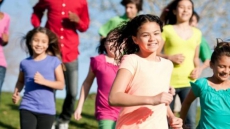Heavy drinking and binge drinking have gone up sharply in the US since 2005 due in large part to rising rates of drinking among women, says a study.
While heavy drinking increased sharply in 2012, up 17.2 percent since 2005, binge drinking increased 8.9 percent across the US since 2005, showed the findings of the study that tracked trends in alcohol use at the county-level.
Nationwide, women showed a much faster escalation in binge drinking than men, with rates rising 17.5 percent between 2005 and 2012; men, on the other hand, saw rates of binge drinking increase 4.9 percent.
"We are seeing some very alarming trends in alcohol overconsumption, especially among women," said lead author of the study Ali Mokdad, professor at the University of Washington.
"We also cannot ignore the fact that in many US counties a quarter of the people, or more, are binge drinkers," Mokdad noted.
In 2012, 8.2 percent of the US adults were considered heavy drinkers and 18.3 percent were binge drinkers.
Madison County, Idaho, had the lowest levels of binge drinking in 2012 (5.9 percent), while Menominee, Wisconsin, had the highest rates of binge drinking (36 percent among residents).
For heavy drinking, Hancock County, Tennessee, had the fewest heavy drinkers (2.4 percent of its population) and Esmeralda County, Nevada, recorded the largest proportion of heavy drinkers (22.4 percent).
The US Centers for Disease Control and Prevention (CDC) defines heavy drinking as exceeding an average of one drink per day for women and two drinks per day for men over the past month.
The CDC defines binge drinking as consuming four drinks or more for women and five drinks or more for men on a single occasion at least once during the past month.
However,the percentage of people who drink any alcohol has remained relatively unchanged over time in the US -- 56 percent of people in the US consumed any alcohol in 2005 and 2012.
The study appeared in the American Journal of Public Health.






